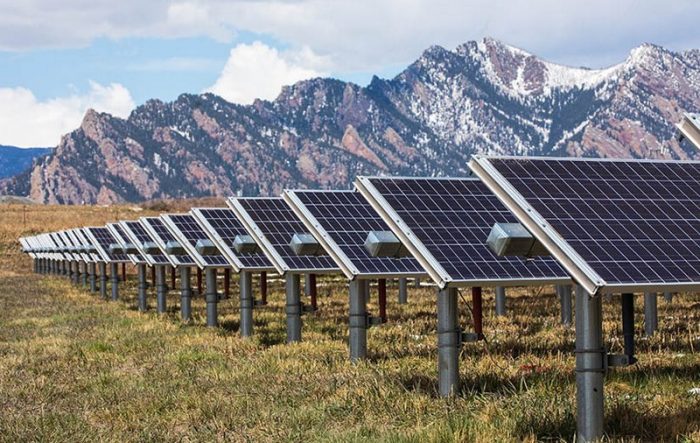
We’ve written a lot about “energy density” over the years, and strategies for packing more panels into constrained areas and rooftops. But new research indicates that, over the longer term, in certain cases, wider spacing may be the better play for increasing solar module efficiency and solar plant economics.
The reason is greater airflow, which means less heat. The analysis in “Technoeconomic Analysis of Changing PV Array Convective Cooling Through Changing Array Spacing,” which appears in the IEEE Journal of Photovoltaics, looked beyond current operating assumptions that considered only the amount of sunlight, wind speed, and ambient temperature.
“When you look at the layout of the system, like how the modules are spaced apart, what angle they’re at, how high they’re off the ground—that all affects airflow,” said Matthew Prilliman, a researcher at the National Renewable Energy Laboratory (NREL) and lead author of the paper.
He notes that changes in heat transfer caused by differences in how an array is configured has not been used much in computer modules to this point. This is despite the fact that maximum power output of a module drops by 0.3% to 0.5% per degree increase in module temperature. Sunlight is the primary driver of the module temperature, with the wind speed having a secondary effect.
Using NREL’s System Advisor Model, the research shows that added airflow gained from a greater separation between rows could cool down solar modules enough in some situations to improve the performance of a PV system.
Other benefits? Increased row distance also means, of course, more ground-reflected irradiance potential and less incidences of rows casting shade on others.
“This is relatively unexplored territory,” he said. Other co-authors from NREL are Janine Keith and Tim Silverman. Outside NREL, the co-authors are Sarah Smith and Raúl Bayoán Cal from Portland State University and Marc Calaf and Brooke Stanislawski from the University of Utah, Salt Lake City. (Stanislawski is now with NREL.)
How far apart? The researchers did not specify how far apart the panels should be because each PV system is different and depends upon local conditions. However, the greatest improvements came in climates with low average annual ambient temperatures and moderate to high average annual wind speeds.
Downsides? Increased row separation does carry additional costs, the researchers found, as more land is needed, and wiring costs increase. The researchers did determine, though, that the benefits outweigh the costs in many cases.
Applications? The research could be particularly relevant for the growing field of agrivoltaics, in which crops are planted adjacent to or below solar panels. The changing land usage for different layouts would affect the placement of crops, which could in turn also affect wind flow.
“Increasing spacing could enable more varieties of crops and more types of agricultural equipment to be utilized in agrivoltaic systems,” said Jordan Macknick, who leads a different NREL research project focused on agrivoltaics. “That could potentially make these spaced-out solar systems more cost-effective and compatible with larger-scale agriculture.”
— Solar Builder magazine
 Series modules and EverVolt battery storage systems — all warrantied by one of America’s most trusted brands.
Series modules and EverVolt battery storage systems — all warrantied by one of America’s most trusted brands.
Leave a Reply
You must be logged in to post a comment.